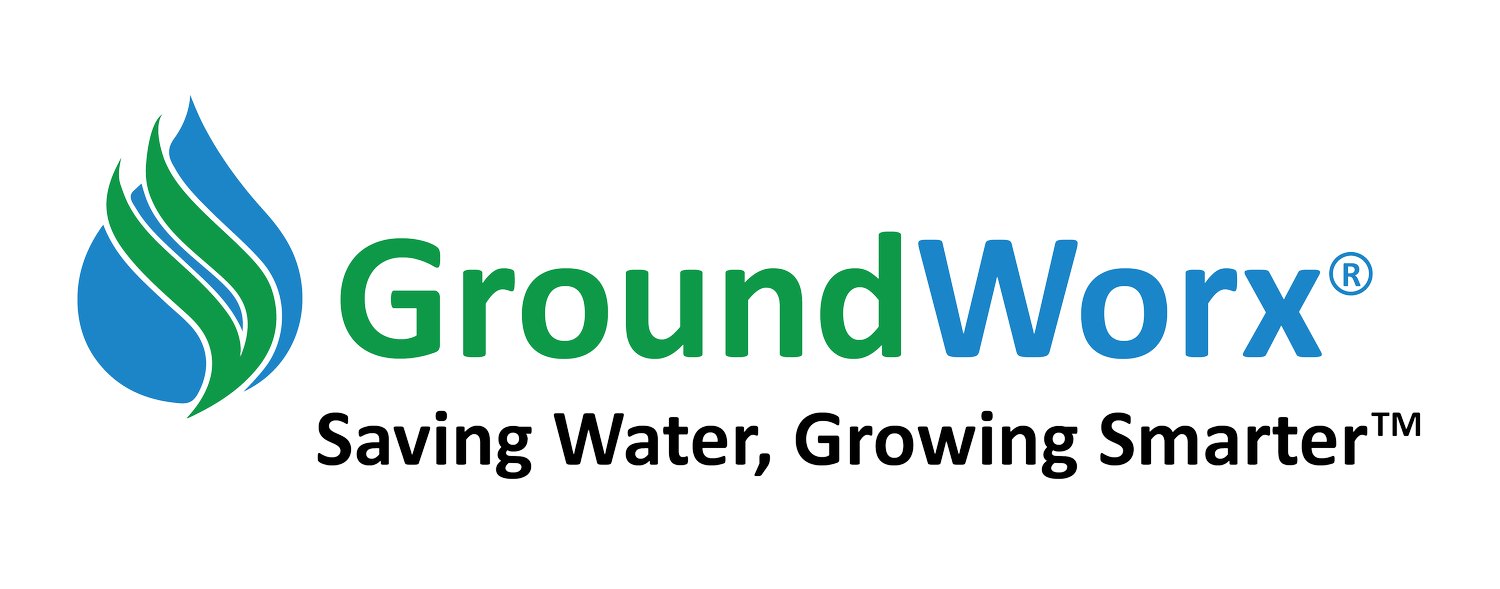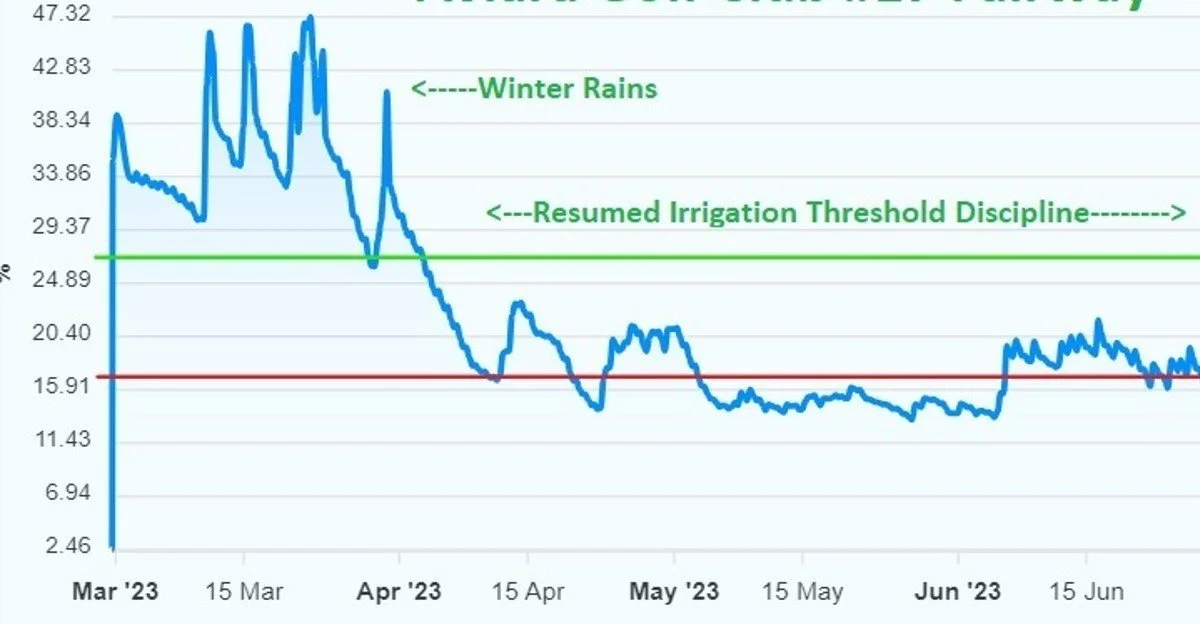Turf Talk with Tim (Post #1)
The three overlooked negative consequences of over-irrigated turf that managers miss and how to avoid them!
Maintaining healthy, vigorous surfaces on your golf course - specifically greens, tees, and fairways - is always a top priority for any golf course. However, this understandably leads many to over-irrigate their turf. While it's obvious that excessive watering leads to wasted resources like water and electricity, there are three overlooked and often underestimated negative consequences of over-irrigated turf.
Fortunately, with new metrics and data collection advances from autonomous Soil Moisture Sensors driven by IoT (Internet of Things), there are new possibilities for higher turf conditioning levels by managing salinity, temperature, and most importantly, moisture.
In this post we’re going to dive into 3 overlooked consequences of over-irrigation and how to avoid them by setting threshold alerts using modern technologies like GroundWorx to improve agronomic outcomes for your golf course.
1. Compromised Soil Structure
The first, overlooked consequence of over-irrigation is the impact on your soil structure. In fact, even if you maintain proper moisture levels, if your irrigation water is of poor quality, the bad actors in your water will gradually destroy the structure of the soil. For example, high Total Dissolved Solids (TDS) in the form of bicarbonates and sodium can tie up calcium and reduce exchange sites starving your turf of oxygen and leads to the destruction of beneficial soil microorganisms, resulting in weakened turf health.
2. Excessive Turf Growth
As agronomists, superintendents, and turf managers our primary goal is to grow turf, but the goal isn’t abundant growth above all else. The goal is the right amount of growth.
Unfortunately, many courses over-irrigate their turf which leads to excessive turf growth. This puts pressure on cutting units, increases labor hours, and drives up fuel consumption. It's important to realize that over-watering not only burdens your resources but also intensifies your maintenance workload. We’re looking for yield without harvest!
3. Inefficient use of Inputs and Wasted Resources
The final overlooked consequence of overly-irrigated turf is wasted inputs. When your turf is continually saturated, it's more challenging for fertilizers, wetting agents, and other vital product inputs. This means despite your best intentions; you might be diluting the nutrients and soil conditioners your turf needs leading to undernourished and unhealthy turf.
The Power Of Threshold Alerts
So how do you avoid these negative consequences of over-irrigation? By knowing your moisture levels and setting threshold alerts. “Believing is the enemy of knowing”!
What's a Threshold Alert and Why Do They Matter?
Threshold alerts are automated systems that trigger notifications when specific conditions are met or exceeded. In the context of golf turfgrass management, they are a lifesaver. These alerts matter because they provide real-time data and enable you to adjust as needed, preventing the negative consequences of over-irrigation listed above. With tech advancements like the GroundWorx solution, setting threshold alerts is easy.
How to Set Threshold Alerts
1. Determine the Ideal Range:
Start by analyzing the moisture requirements of your specific turf grass and soil type. Different types of grass may have varying water needs, so it's essential to set the range that's right for your course.
It’s important to keep a balance of turf health, color, firmness, and playability. An effective method is to push the limits a bit and do a visual assessment of the turf with lower moisture percentages with Soil Moisture Sensors in place to establish a healthy low percentage threshold.
2. Monitor Weather Conditions:
Considering external factors like weather is critical.
The chart below shows how your moisture percentage can be visualized and managed properly through threshold alerts. This customer (image below) exercises threshold discipline by adhering to preset moisture levels and using the GroundWorx app to make informed irrigation decisions. The client went below his low moisture threshold for a while because the irrigation requirement wasn’t there due to weather conditions. This period was cloudy and drizzly, and the visual quality of the turf remained with very little added irrigation.
3. Regularly Review and Adjust:
Your golf course's needs may change over time, so it's crucial to regularly review and adjust your threshold alerts. Using historical data and feedback from course conditions, fine-tune your settings to ensure they remain effective.
Your Turn
In the world of growing turfgrass for golf courses, a proactive approach to irrigation is essential and that means managing moisture levels. Over-irrigation has consequences that extend far beyond wasted resources. To maintain healthy turf, avoid excessive growth, and make the most of your inputs, set up threshold alerts tailored to your course's specific needs. It's a small investment that can lead to substantial savings, both in resources and labor. So, take the initiative and protect your golf course from the hidden pitfalls of over-irrigation.
About Tim
Tim Barrier, GroundWorx VP of Business Development
35+ years in Golf Industry
Certified Golf Course Superintendent (CGCS)
Former Golf Course Superintendent, Rancho Santa Fe Golf Club
Former President & Board of Director member, San Diego Golf Course Superintendents Association
Want to connect with Tim, email him at sales@getgroundworx.com.



